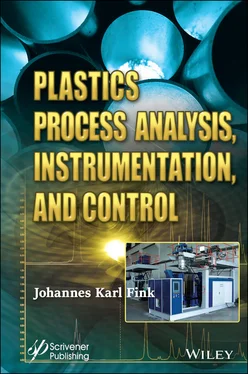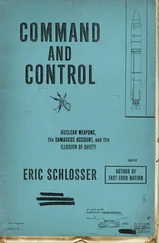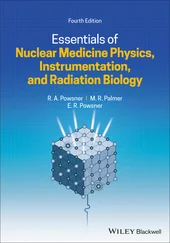2 Gasoline fraction,
3 Kerosene fraction,
4 Diesel fraction, and
5 Waxy compounds.
While the last four families may all find existing market applications, the valorization of the gases is more complicated. This often leads to the utilization of such an off-gas for energy recovery directly on the production site.
In general, it is advantageous to increase the kerosene and diesel fraction, since these are valuable products. Furthermore, the quality of diesel fraction obtained should be high, i.e., it should contain a low amount of aromatics.
So, in the catalytic cracking of waste plastic, high molecular weight polymers should be cracked into smaller molecules of lighter weight. In theory, the end product of such cracking reaction mainly consists of gases comprising lightweight hydrocarbons. Therefore, a priori , low-molecular-weight hydrocarbons should not readily react under cracking conditions. If at all, lightweight hydrocarbons should undergo reactions which would transform them into even lighter compounds.
It has been found that contrary to these expectations, lightweight hydrocarbons being introduced within a reactor for cracking waste plastic are transformed into heavier products, thereby increasing the amount of valuable kerosene and diesel fractions (97). Furthermore, it was found that even the undesired gases in the product stream obtained from such cracking reactor can be recycled into the process, thereby even further increasing the kerosene and diesel fractions. Additionally, it was found that the additional introduction of lightweight hydrocarbons within the cracking reactor yields diesel fractions of higher quality with respect to a decreased amount of aromatics obtained.
The plastics used in the process are preferably polyolefins such as HDPE, low-density poly(ethylene), PP and also PS. Other polymers, such as PVC, PET poly(urethane), ABS, nylon, thermosetting polymers and fluorinated polymers are less desirable. The catalyst used in the process is preferably a zeolite-type catalyst.
Specific examples for suitable zeolite-type catalysts are ZSM-5, ZSM-11, ZSM-22, ZSM-23, ZSM-35, ZSM-48, ZSM-50, TS-1, TS-2, SSZ-46, MCM-22, MCM-49, FU-9, PSH-3, ITQ-1, EU-1, NU-10, silicalite-1, silicalite-2, boralite-C, boralite-D, BCA, and mixtures there of.
The degradation process was carried out as follows (97):
Degradation Process 1–1:In a catalytic run in the semibatch mode, 30 g of plastic (20% PP, 80% PE) was loaded inside the reactor and a defined amount of catalyst was stored in the catalyst storage tank. The reactor was closed and heated from room temperature to 200°C during 20 min , while simultaneously purging with a 150 ml min –1nitrogen flow. When the internal temperature reached the melting point of the plastic, stirring was started and slowly increased to 690 rpm . The temperature was held at 200°C for 25–30 min . During this heating process, the nitrogen coming out from the reactor was not collected. Meanwhile, the catalyst storage tank containing the catalyst was purged with nitrogen several times.
After this first pretreatment step and only in those experiments where propylene was fed, the flow of nitrogen was decreased from 150 to 103 ml min –1and 38 ml min –1of propylene was introduced inside the reactor. The flows were allowed to stabilize for several minutes, after which the mixture of gases was collected in a gas sampling bag for 3 min . After this collection of gases, the temperature control setpoint was changed from external to internal, the internal temperature was increased to the reaction temperature at a heating rate of 10°C/ min , and the collection of gases and nitrogen in the corresponding gas sampling bag was started.
When the internal temperature reached the reaction temperature, the catalyst was introduced inside the reactor, and the circulation of the gaseous products was commuted to another pair of glass traps and corresponding gas sampling bag. This was considered as the zero reaction time. During the selected time periods, liquid and gaseous products were collected in a pair of glass traps and their associated gas sampling bag, respectively. At the end of the experiment, the flow of propylene was stopped and the reactor was cooled to room temperature. During this cooling step, liquids and gases were also collected.
1. D.V. Rosato, N.R. Schott, and M.G. Rosato, Plastics Engineering, Manufacturing & Data Handbook , Vol. 1 of Plastics Engineering, Manufacturing & Data Handbook , Springer US, 2001.
2. A.A. Fagade and D.O. Kazmer, Journal of Injection Molding Technology , Vol. 4, p. 97, 2000.
3. A.Z.A. Kadir, Y. Yusof, and M.S. Wahab, International Journal of Advanced Manufacturing Technology , Vol. 107, p. 4033, 2020.
4. A. Niazi, J.S. Dai, S. Balabani, and L. Seneviratne, Journal of Manufacturing Science and Engineering , Vol. 128, p. 563, 09 2005.
5. D. Zhao, M. Wang, and D. Yao, Injection molding at multiscales in M. Koç and T. Özel, eds., Modern Manufacturing Processes , chapter 5, pp. 89–136. John Wiley & Sons, Ltd., 2019.
6. H. Zhou, Computer Modeling for Injection Molding: Simulation, Optimization, and Control , Wiley, 2013.
7. Y.-M. Deng, D. Zheng, B.-S. Sun, and H.-D. Zhong, Polymer-Plastics Technology and Engineering , Vol. 47, p. 943, 2008.
8. D. Yao and B. Kim, Polymer-Plastics Technology and Engineering , Vol. 37, p. 509, 1998.
9. D. Yang, P. Zhao, H. Zhou, and L. Chen, Journal of Reinforced Plastics and Composites , Vol. 33, p. 1403, 2014.
10. H. Lan, Computers in Industry , Vol. 60, p. 643, 2009.
11. D.S. Thomas and S.W. Gilbert, NIST special publication , p. 12, 2014.
12. C. Lindemann and R. Koch, Cost efficient design and planning for additive manufacturing technologies, in Solid Freeform Fabrication 2016 , pp. 93–112. Solid Freeform Fabrication Symposium — An Additive Manufacturing Conference, 2016.
13. M. Fera, F. Fruggiero, A. Lambiase, and R. Macchiaroli, Cogent Engineering , Vol. 3, 2016.
14. D. Thomas, The International Journal of Advanced Manufacturing Technology , Vol. 85, p. 1857, 2016.
15. M.K. Thompson, G. Moroni, T. Vaneker, G. Fadel, R.I. Campbell, I. Gibson, A. Bernard, J. Schulz, P. Graf, B. Ahuja, and F. Martina, CIRP Annals , Vol. 65, p. 737, 2016.
16. A. Busachi, J. Erkoyuncu, P. Colegrove, F. Martina, C. Watts, and R. Drake, CIRP Journal of Manufacturing Science and Technology , Vol. 19, p. 117, 2017.
17. G. Costabile, M. Fera, F. Fruggiero, A. Lambiase, and D. Pham, International Journal of Industrial Engineering Computations , Vol. 8, p. 263, 2017.
18. A. Gisario, M. Kazarian, F. Martina, and M. Mehrpouya, Journal of Manufacturing Systems , Vol. 53, p. 124, 2019.
19. C.-L. Xiao and H.-X. Huang, International Communications in Heat and Mass Transfer , Vol. 96, p. 114, 2018.
20. G. Wang, Y. Hui, L. Zhang, and G. Zhao, International Journal of Heat and Mass Transfer , Vol. 116, p. 1192, 2018.
21. Wikipedia contributors, Reynolds number — Wikipedia, the free encyclopedia, https://en.wikipedia.org/w/index.php?title=Reynolds_number&oldid=968184456, 2020. [Online; accessed 4-August-2020].
22. G. Wang, G. Zhao, and X. Wang, Materials & Design , Vol. 46, p. 457, 2013.
23. G. Wang, G. Zhao, and Y. Guan, Journal of Applied Polymer Science , Vol. 128, p. 1339, 2013.
24. H.J. Oh, Weldless injection mold apparatus, US Patent 8 597 018, assigned to Namdo Mold Co. Ltd., GNST Co. Ltd., December 03, 2013.
Читать дальше












